INDIAN ARMED FORCES CHIEFS ON
OUR RELENTLESS AND FOCUSED PUBLISHING EFFORTS

SP Guide Publications puts forth a well compiled articulation of issues, pursuits and accomplishments of the Indian Army, over the years

I am confident that SP Guide Publications would continue to inform, inspire and influence.

My compliments to SP Guide Publications for informative and credible reportage on contemporary aerospace issues over the past six decades.
Perfect Red Flag
The prestigious Exercise Red Flag 2016 concluded its advanced aerial combat training between the Indian Air Force, the US Air Force and the US Navy on May 13, 2016
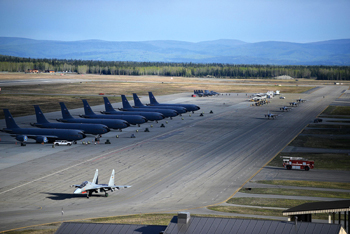
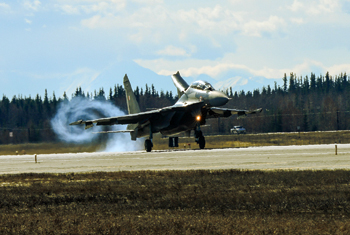
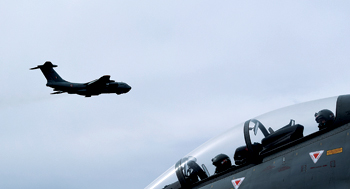
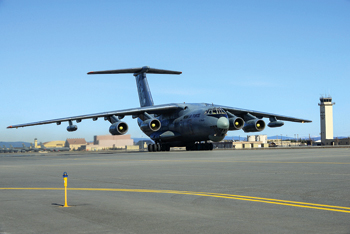
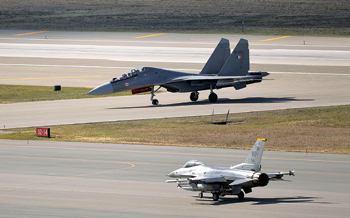
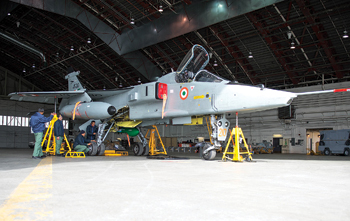
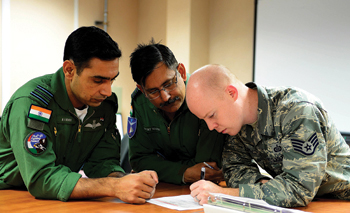
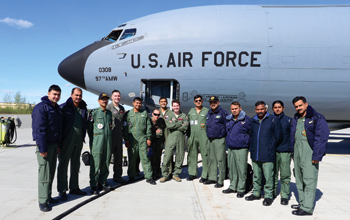
Red Flag Alaska 16-1, which was an advanced aerial combat training exercise hosted at Eielson Air Force Base (AFB) in Alaska (a successor to the previous Cope Thunder exercise series), concluded on May 14, 2016. The main phase of the exercise had commenced on April 28, 2016, with a mix of combat and support elements participating from the Indian Air Force (IAF), the United States Air Force (USAF) and the United States Navy (USN).
Over the last decade, the IAF has been actively participating in various operational exercises hosted by different countries wherein its capabilities have been pitted against the best air forces in the world. While referring to the overall exercise plan and objective Red Flag Alaska 16-1, the Team Leader Group Captain H Assudani said, “The objective of this intercontinental deployment was not only to showcase the capability of the IAF in undertaking Integrated Air Operations but also to imbibe operational lessons from the exercise engagements which will help us add more teeth to our overall war-waging capabilities.”
The exercise is conducted under multiple simulated scenarios designed to provide realistic settings. The overall demarcation is between Red Force nominated as the Defensive Force component fighting to protect own airspace and assets and the Blue Force designated as the Offensive Force composite package. The Red Force was mainly constituted by No 18 Squadron USAF, the Aggressor Squadron, flying the F-16. The IAF along with the other squadrons of the USAF flying the F-15, F-16, F-22 and of the USN operating the F-18, constituted the Blue Force. During the exercise, the IAF also flew as a part of the Red Force alongside the Aggressors which for it, was the first experience of its kind.
The Exercise saw the potent Su-30MKI aircraft of the IAF participating in Offensive Counter Air Operations in which they provided escort cover to the strike elements. Apart from this, the IAF Jaguars DARIN II undertook integrated strike missions dropping practice bombs over the world renowned JPARC Air to Ground Range. Both these fleets performed their roles exceptionally well. There were three missions commanded by the IAF in this exercise. Mission commanders of both the Jaguars and Su-30s were involved in planning, execution and conduct of debrief. One of the missions was commanded by Sqn Ldr Sidhu, who, while speaking on the mission, said “It was a great opportunity to lead all the coalition forces. It gives one immense satisfaction when all the participants execute the briefed plan which becomes a success.”
While talking about participation of the IAF in the Exercise Red Flag, Lt Colonel Brian Toth, Chief Operations Officer of 354 Operations Group, said: “The IAF’s participation has been extremely good from my perspective. For most nations, it takes an exercise or two to step up to meet the requirements of a mission commander. The IAF has been mission commander three times and also performed the package commander’s roles. The IAF hase done a tremendous job.”
During the Exercise elements of the Red Flag team formed the White Force and using high-tech instrumentation and mission debrief tools to evaluate the performance of the participants in an objective and logical manner. The White Force watched the entire exercise in real time on tactical displays in the operations room. Kill removal or removal of the pilots and aircraft assumed shot down by the enemy, made the Exercise more realistic.
The temperatures were sub-zero during a large part of the Exercise, which posed a challenge to the maintenance team It is noteworthy that despite the challenging environment, the maintenance team ensured 100 per cent serviceability of all platforms throughout the four weeks. Lt Colonel Clarence McRae, Commander of the Red Flag-Alaska 16-1 Expeditionary Forces Maintenance Group , said: “Red Flag Alaska provided all of the participants a fantastic opportunity to train with members of the IAF. The exchange of lessons learned and best practices with our partners in the Indo-Asia-Pacific region have enabled us to strengthen our partnership and signifies our commitment to this area of operations. The professionalism of the IAF airmen made bolstering our countries’ relationship easy and helped provide realistic combat training for all participants.”
The Senior Engineering Officers of the IAF units were happy with the comprehensive IAF technical practices which are well defined and meticulous. Adherence to these have ensured a high flight line availability that allowed aircrew to perform their missions. Wg Cdr Pratyush Anand, SEO of the Su-30 Squadron, said, “Out-of-the-box thinking of the technicians has earned praise from all quarters. The participating airmen got an opportunity to see a variety of aircraft and this exposure and interaction with other fleets will go a long way in evolving and refining our own practices.”
In his closing address, Colonel William Culver, Vice Commander of the 354th Fighter Wing said, “This was one of the best Exercise Red Flag that I have seen. I compliment the exceptional standards displayed by the IAF and am amazed to see all the ten aircraft the IAF had brought (four Su-30s, four Jaguars and two IL-78s) maintaining 100 per cent serviceability for the entire duration of four weeks and their aircraft flying on all days as per plan.”
Wg Cdr Saumitra Tamaskar, Exercise Director, said, “Having set out with well-defined objectives, the IAF contingent’s efforts over the past month have ensured that they take back important lessons which will help undertake operations across a wide and diverse spectrum and meet any future challenges.”
The IAF contingent began de-induction on May 14, 2016, and are planned to return to India in the last week of May 2016. On their way back from Alsaka, the Su-30s of the IAF will participate in Exercise Desert Eagle II with the UAE Air Force.
Post Exercise Thoughts
While in the second round of Exercise Red Flag, the IAF once again emerged with flying colours, there is an urgent need to take stock and introspect even though all the elements of the participating team earned the well-deserved accolades from the hosts. The first time the IAF participated in Exercise Red Flag was way back in 2008 when it was held at the USAF airbase at Nellis. As participating in Exercise Red Flag proved to be an expensive affair, the Government of India decided to permit the IAF to take part in this international exercise once in five years. The IAF could not take part in Exercise Red Flag in 2013, five years after the first round in 2008, as it was cancelled by the US.
Nearly two months prior to the sojourn in Alaska this year, the IAF staged Exercise Iron Fist at the Pokhran firing range in Jaisalmer district of Rajasthan. Compared to just 12 aircraft participating in Exercise Red Flag, the firepower demonstration at Pokhran had over 180 aircraft of the IAF taking part. These included fighter jets, transport aircraft and helicopters. Of course Exercise Red Flag was conducted over a period of 16 days whereas the firepower demonstration at Pokhran lasted only for a day. Prior to Exercise Iron Fist, in a media briefing, a senior functionary of the IAF had said “Numbers in the IAF were not adequate to fully execute an air campaign involving a two-front war”. The reference was clearly to the alarming erosion in the operational potential of the combat fleet of the IAF. There is undoubtedly an urgent need for the government to address this problem without further dithering or delay.
The objectives of the two exercises were completely different. While Exercise Iron Fist was to showcase a wide range of operational capabilities of the IAF covering six segments of the force both by day and night, Exercise Red Flag was meant to give exposure to selected parts of the IAF’s combat fleet and supporting elements exposure to operational philosophy, tactics and best practices of the USAF and the US Navy. It is now left to the IAF to benefit from the experience and make qualitative changes in the currently followed operating philosophies and procedures where considered appropriate.
While the aim of Exercise Iron Fist was to apprise the nation of the level and range of capability of the IAF, one of the aims of Exercise Red Flag is to project ‘Military Diplomacy’ as this serves to consolidate relationship not only between the two air forces but between two nations as well!





